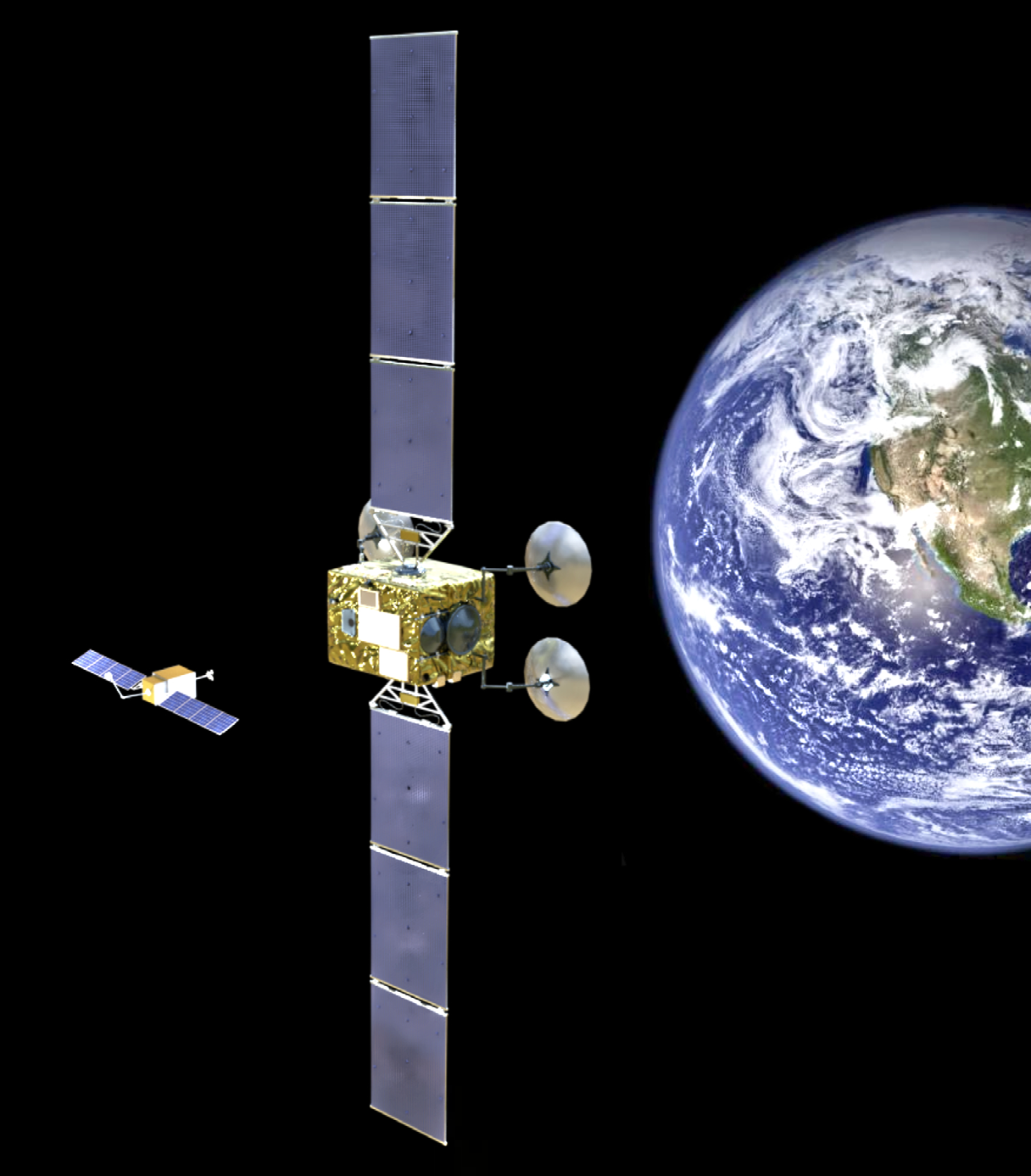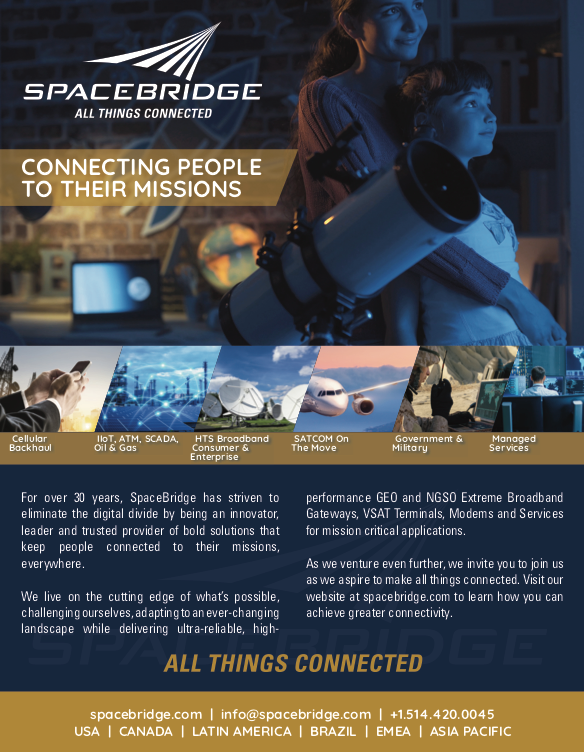
Artistic rendition of Starfish Space’s
CEPHALOPOD software being tested on the
Tenzing smallsat this summer. Image is
courtesy of the company.
Austin Link is a co-founder at Starfish Space where he’s giving life to on-orbit services. Originally from Iowa, he then went to Stanford for a B.S. in Physics and later Purdue for an M.S. in Aerospace Engineering. In the Aerospace industry, Austin has worked at Lockheed Martin on THAAD and at Blue Origin on a variety of launch vehicles and engines. His particular focus has been on space system architecture, modeling, and operating under uncertainty, all tools that are being applied at Starfish Space.
Good day, Mr. Link. You and your co-founder, Dr. Trevor Bennett, are former Blue Origin engineers. What made you want to start Starfish Space a year and half ago?

Austin Link
Like everything with engineers, this was a calculated decision — Blue Origin was a great place to work, really a dream job. I was fortunate to be surrounded by many brilliant engineers and I learned a ton from them. Blue also has an incredible vision for our future in space, one that’s very aligned with what we envision at Starfish.
Trevor has always had the entrepreneurship bug... I think he grew up with it. I, on the other hand, was late to the party. A couple of years ago, I attended a space industry conference. I left that event with two major takeaways. First, the work that we were doing at Blue Origin was really exciting, and I was reinvigorated for what was ahead. The other takeaway was contradictory: I was struck at the awesome work of startups such as Rocket Lab, Made In Space and Analytical Space. It made entrepreneurship in space seem possible to me, and it was soon after that Trevor and I began more serious discussions.
As Trevor and I talked, the more we realized we had a similar concept for providing value to customers in space, both in the medium and long term, through a space tug. As the off-world economy develops autonomy, robotics and logistics on-orbit are essential to expanding more deeply into Earth orbit and eventually the universe. The chance to make humanity’s activities in space more dynamic was so exciting we had to take the leap.
Worth nothing is that the number one source of confidence in starting Starfish Space was the chance to work with Trevor. He’s an extraordinary engineer and his mind makes ambitious undertakings possible. He’s also an extraordinary friend. Not all business partners are fortunate enough to have had Thanksgiving dinner together for the last three years. Working with Trevor brings a little extra joy to the every day operations at Starfish.
You’re developing a space tug for satellite servicing. For those who may not know what a space tug is, can you explain its purpose and why a space tug is important?
Austin Link
The term “space tug” has been around for decades to describe vehicles that provide on-orbit transportation. Rockets are the first phase in space transportation, similar to trans-oceanic shipping. The American economy boomed as railroads and later, roads, transported goods more efficiently on land and space tugs will someday serve the same purpose on-orbit.
That’s a zoomed-out description of space tugs. In the more immediate time frame, the term is used to indicate satellites of two types: those that deliver other satellites at the start of their life, and those that perform satellite servicing operations for satellites already on-orbit.
At Starfish Space, our Otter space tug falls into the latter category. We are focused on two satellite servicing missions. First is life extension in Geosynchronous Orbit (GEO). We can help a satellite maintain its spot on-orbit for several years after it runs out of fuel. Second is debris removal in Low Earth Orbit (LEO). We can supplement the de-orbiting of satellites to ensure they don’t become debris polluting orbits.
These missions are important as they help customers maximize the resources they have on-orbit. They also ensure that space remains a safe place for us to continue to build digital infrastructure for the future through the extensive deployment of new satellites.
A space tug will help with satellite servicing and space debris removal, which is currently a major topic of interest. Why is it a problem and how might the problem get bigger if we don’t do something about it?

Starfish Space’s Otter space tug initiating a
docking maneuver.
Image is courtesy of thecompany.
Austin Link
Space is really expansive. But there are a few particular regions that are useful places to place satellites. Once put into these orbits, satellites stay there effectively forever, even after they stop operating.
These dead satellites become hazards that threaten other satellites and even astronauts. Eventually these dead satellites collide with other objects, shattering into debris that causes an even more extensive threat. With enough objects on-orbit, a collision can trigger a chain reaction known as the Kessler Syndrome, which would render that orbital regime unusable thereafter.
None of this is new knowledge and, in fact, many satellite operators have operated responsibly for years by disposing of their satellites by burning them up in Earth’s atmosphere or into less useful orbits that are termed “Graveyard Orbits.” They deserve credit for this action, and so far, it has meant there’s been only one significant debris collision on-orbit.
The space landscape is changing, though, with the launch of mega-constellations from companies like SpaceX, Amazon and OneWeb. All told, there’s likely to be five times as many satellites launched this decade as have been launched in all of human history until the current day. That means we have to become more serious about space debris to preserve these valuable orbits.
Starfish Space is hoping to help with space debris and, at the same time, become a profitable business. How have you formed a business model around this service?
Austin Link
The Otter space tug, and other similar approaches, are not the most efficient methods of de-orbiting a satellite. That feels like something I shouldn’t say, but it’s important to be honest about what we as a company can accomplish.
Most satellites should use their own engine and propellant to move to a disposal orbit.
The value of the Otter is as a supplementary tug. For a constellation, it turns out to be more cost efficient to operate a little longer, then dispose of the majority of the satellites on their own. The Otter will then clear up the 5 to 10 percent of satellites that can’t complete the disposal by themselves.
There’s significant extra revenue from taking a little risk and obtaining a couple of extra years from a constellation. That dwarfs the cost of a space tug disposing of a few satellites. In the end, that means we help satellite operators to derive the most from their on-orbit assets.
A space tug is a great first step in developing the off-world economy. What is the big picture? How will developing a space tug influence future off-world development?
Austin Link
Satellite servicing is a large industry and we’re excited to help customers get more from their satellites. The autonomy and robotics technologies involved in Otter also form essential infrastructure for the developing off-world economy.
When Trevor and I look out at the future on-orbit spacecraft we see a variety of commercial activities that will someday come into existence. These activities include satellite servicing, but also assembly of large structures, manufacturing on-orbit, power generation stations, mining of asteroids, even recycling old space debris. This is the same line of thinking as Blue Origin’s “Millions of people living and working in space.”

These lines of business probably won’t develop in the 2020s. Some of them will likely have long time horizons for implementation. For all of them we need a more dynamic environment in space, one where it’s possible to easily and efficiently move objects that are on-orbit. We think the Otter provides the foundational infrastructure that will enable these and other commercial space activities.
Starfish Space will be launching its software this June on a SpaceX Falcon 9 for your first in-space demonstration. What is your goal with the in- space demonstration?
Austin Link
This demonstration is a tremendous milestone for Starfish Space. Because we’re focused on satellite servicing, our key technology is software to control the rendezvous, proximity operations and docking (RPOD) of Otter.
We’ve named this software CEPHALOPOD. It has an extraordinary acronym (that’s the danger of allowing a physics major to participate in the naming process).
This mission allows us to test CEPHALOPOD that will control the satellite through a suite of proximity operations maneuvers and simulated dockings. These maneuvers will include some first-of-their-kind proximity operation trajectories with electric propulsion, setting the stage for substantially more efficient satellite servicing vehicle architectures. All of these tests will help us build confidence in our key technology and provide data to drive future development.
I would be remiss if I didn’t also highlight the awesome partners we’re working with as part of this mission. We’re flying on an Astro Digital made satellite. Additionally, different phases of the mission involve working with Accion Systems, Benchmark Space Systems, Orbit Fab, and SCOUT. The incredible step this mission represents for us is only possible because we have fabulous partners.
You’ve accomplished a lot in a year and a half. How do you view the importance of collaboration with other space companies?
Austin Link
We want to work together. In the space industry, we sometimes cooperate and sometimes compete. It’s not uncommon to find companies doing both at the same time.
However, we’re a unique industry because we’re all fueled by the same dream at the end of the day. I, like the rest of the industry, dream of being Jean-Luc Picard standing on the deck of the USS Enterprise exploring the Final Frontier (some people dream of being Captain Kirk; we must be patient with them until they see the light).

This particular dream may be unlikely but, even if it isn’t me, I hope that someday somebody has that experience. Our only chance to reach some version of that future is to work together and collaborate as an industry.
At Starfish Space, we want to be part of the rising tide of innovative space companies providing value and joy for humans from orbit. We have a long way to go before we’ve really achieved the goals we’re aiming for, but we’re excited by our start and we hope to continue doing our part.
Space represents a unique opportunity for humans to dream, explore, discover and cooperate. If you’re entering the space economy, or even if you’re just hearing about Starfish for the first time, please reach out I’d love to find a way to work together. Contact me via email at austin@ starfishspace.com
www.starfishspace.com


